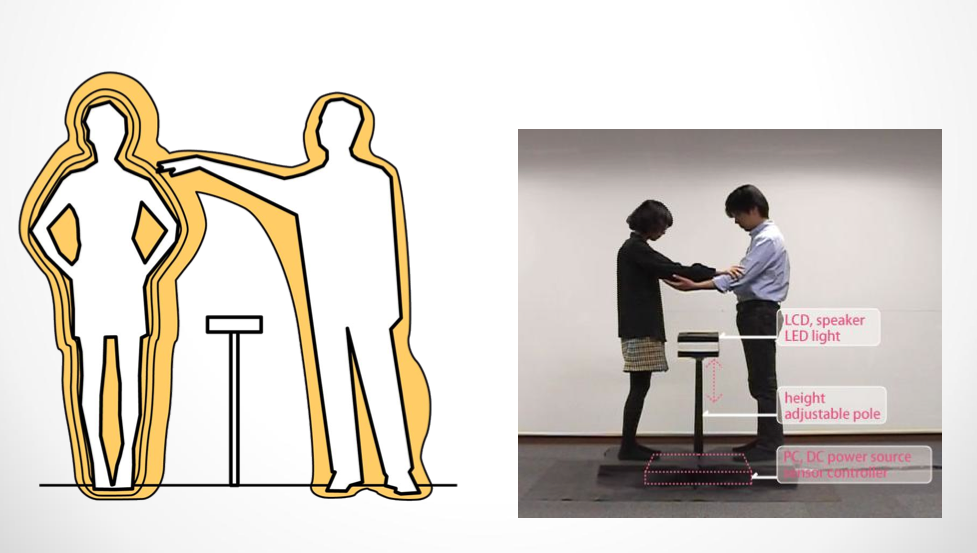Ether Inductor
Humans are essentially social beings. Like many other creatures, we tend to feel better when we’re around other people, even if only to envy them for the delicious fitness breakfast they happen to be enjoying. Nevertheless, interaction with others isn’t always easy for us. After all, men and women are said to not even speak the same language, and when we’re confronted with The Others—exotic strangers in our midst—many of us are afraid or at least get uptight to some extent.

The Ether Inductor attempts to get this across in a playful, fun way. Although it doesn’t offer solutions to life’s big problems, it forces us to work together, to get connected with others. Highly responsive sensors measure the spatial distance between two bodies, and a display shows the various tasks they have to perform. There are rewards and punishments in the spirit of the carrot and stick approach. But don’t worry, nobody gets hurt. There are various ways to set up this seemingly complex apparatus. One looks like an initially opaque partition had been inserted between two people, and this prevents them from seeing each other (yet). On both sides of the partition, the same tasks are assigned, and, depending on how well the teamwork functions, parts of the partition become transparent until the two protagonists can finally scrutinize each other unimpeded.
The musical variant is the Ether Synthesizer, which transforms the protagonists’ movements into music or, in other words, converts spatial distances into electrical signals into acoustic waves that, in turn, can at least influence the protagonists from whom they originated.
This device (instrument, plaything or whatever you want to call it) was thought up by students of Hiroshi Ishiguro. They’re known as Team Mitoh and roomoot (Marika Hayashi, Ryuma Niiyama, Takashi Mikami, Naohiko Sumimoto, Akira Tsukimori and Hironori Mizoguchi). The Ether Inductor will make an appearance at Ars Electronica.





